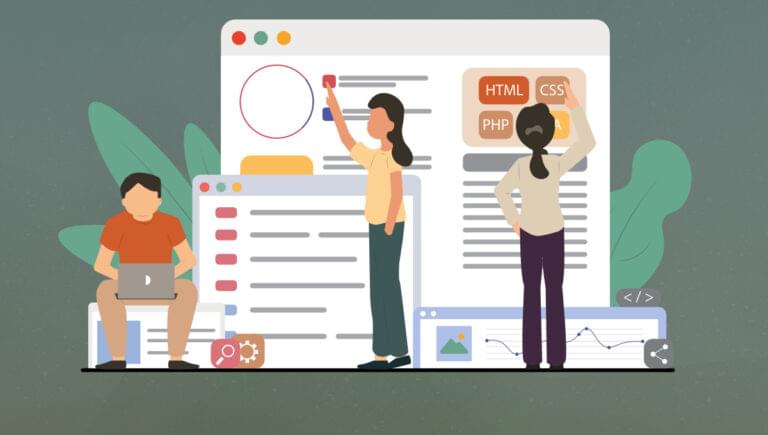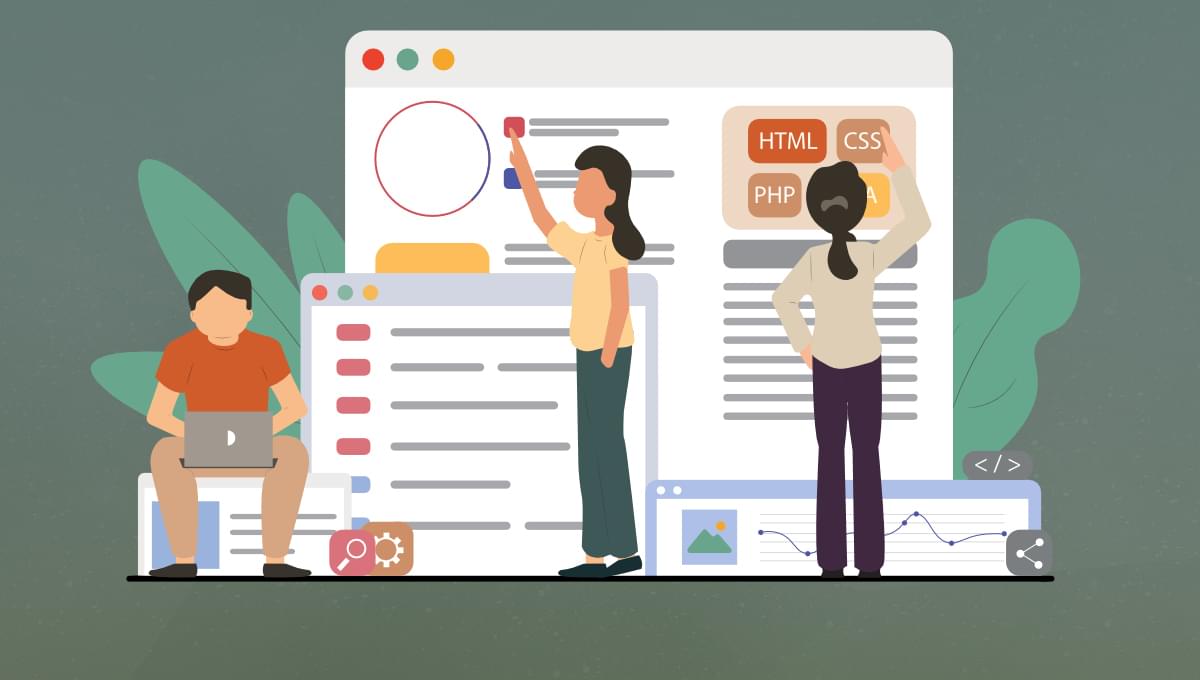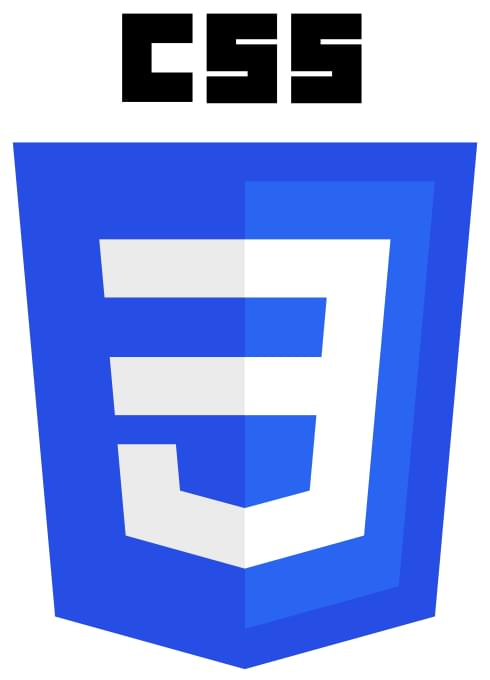The Best Programming Languages You Can Use for Web Development (2024)

In this article, we’ll explore the best programming languages for web development. Web development is a vast field with a lot of opportunity. It’s constantly evolving, and offers a lot of potential for career growth. In order to be a web developer, you need to have a good understanding of at least one programming language.
However, the type of programming language a developer will use often depends on the types of development and specific aspects of the project, and it also depends on the developer’s preference. Let’s look at some of the factors you need to consider when deciding what languages to learn for web development.
- What Are Programming Languages?
- Different Types of Programming Languages
- Different Needs Require Different Languages
- 8 of the Best Programming Languages for 2023
- Which Programming Languages Are Best for Beginners to Use?
- Conclusion

Key Takeaways
What Are Programming Languages?
Programming languages are sets of rules that provide a structure for computer programming. They’re used to create specific instructions that can be executed by a machine, usually a computer. Programming languages can be used to create programs to solve specific problems, or to express algorithms.
Some programming languages are designed for specific tasks, while others are more general-purpose. For example, SQL is a domain-specific language used for querying databases, while Python is a general-purpose language that can be used for a wide range of tasks.
Different Types of Programming Languages
For the sake of context, let’s say that programming languages can be classified into many different types, based on their purpose, level of abstraction, and syntax. However, much of that — such as low level programming and procedural programming — isn’t of much interest to us when it comes to modern web programming, so we’ll focus just on certain specific groups.
The main types of programming languages are as follows.
General-purpose languages
General-purpose languages are designed to be used for a wide range of tasks. Examples of general-purpose programming languages include C++, Java, Python, and more and more these days even JavaScript.
Domain-specific languages
Domain-specific languages are designed to be used for specific tasks. For example, SQL is a domain-specific language used for querying databases, while HTML is a domain-specific language used for creating web pages.
Markup languages
Markup languages are used to create documents that contain structured data. Markup languages are not executable on their own, but they can be used to create documents that can be executed by other programs. Examples of markup languages include HTML, XML, and JSON (note quite, but let’s go with that categorization).
Compiled and interpreted languages
Additionally, programming languages can be classified as either compiled or interpreted.
Compiled languages are converted into machine code that can be directly executed by a computer. Examples of compiled languages include C++ and Java.
Interpreted languages aren’t converted into machine code, but they are executed by an interpreter. Examples of interpreted languages include JavaScript and Python.
Scripting Languages
As an additional and useful category, scripting languages are designed to automate tasks. They’re often used to write code that interacts with other software programs. For example, a script might be used to automate the process of creating a new user account in a web application.
Examples of scripting languages include Bash, PERL, and PowerShell.
Table summary of programming language types
| Type | General Purpose | Domain Specific | Markup Language | Compiled | Interpreted |
|---|---|---|---|---|---|
| Bash | Yes | No | No | No | Yes |
| CSS | No | No | No | No | Yes |
| C++ | Yes | No | No | Yes | No |
| Go | Yes | No | No | Yes | No |
| HTML | No | No | Yes | No | Yes |
| JSON | No | No | Yes | No | Yes |
| JavaScript | Yes | No | No | No | Yes |
| PHP | Yes | No | No | No | Yes |
| Python | Yes | No | No | No | Yes |
| TypeScript | Yes | No | No | No | Yes |
| SQL | No | Yes | No | No | Yes |
| XML | No | No | Yes | No | Yes |
Different Needs Require Different Languages
There’s no single best programming language that will suit all needs. Different programming languages are better suited for different tasks. A developer needs to assess the task at hand in order to make the best decision.
For example, languages like PHP or Python are well suited for developing dynamic web pages supported by the server, while JavaScript was originally built for developing client-side code for a website or web application. But as we’ll see, things have been changing a bit.
The Full Stack
Until not long ago, a killer combo was to use PHP for the server-side code and JavaScript for the client-side code, as this would give you the best of both worlds: the dynamic nature of PHP for the server-side code and the flexibility and event-driven nature of JavaScript for the client-side code.
However, these days a more common approach is to use JavaScript or TypeScript for both the server-side and client-side code (the so-called “JavaScript Everywhere” paradigm), which can simplify the codebase and maintenance, as you’re dealing primarily with a single language. This is made possible by frameworks like Node.js, and libraries like React, Angular, and Vue.js.
To be clear, the so-called “full” stack involves combining the backend (server side) with the frontend (client side).
The Jamstack
An even more cutting-edge approach is to go serverless. This essentially involves writing JavaScript websites that don’t need any server-side code, and relying on APIs for further interactivity — such as authentication, real-time databases, and more.
This approach has been dubbed the “Jamstack”: JavaScript + API + Markup.
Among other things, the Jamstack does the following:
- It simplifies management. There’s mostly no need to upgrade, patch, maintain, and even pay for servers.
- It increases availability. That’s because you’re basically working with modern versions of old-school web tech (HTML, CSS and JavaScript), which makes website super fast to load, perfect for caching, while also making it super easy to deploy and distribute to content delivery networks worldwide.
For more on this, see:
- Introduction to the Jamstack: Build Secure, High-Performance Sites
- 100 Jamstack Tools, APIs & Services to Power Your Sites
At the end of the day, it’s important to note that there’s no one-size-fits-all approach to programming, so even if you don’t become a jack of all trades, you’ll surely end up learning and using a bit of this with a bit of that.
8 of the Best Programming Languages for 2023
The world of programming languages is vast and always evolving. It can be tough to keep up with the latest and greatest, especially when you’re just getting started. Here are eight of the best programming languages to learn in 2023.
Consider that each language has its own strengths and weaknesses. For example, if you need to create a complex web application, you’ll want to use a language that’s easy to scale and has a large ecosystem of libraries and frameworks.
On the other hand, if you’re just creating a simple website, you might be able to get away with using a less complex language. When possible, try to choose a language that you’ll comfortable with in the long run, and that will make your life easier.
HTML

The HyperText Markup Language (HTML) is the standard markup language for creating web pages. Alongside CSS and JavaScript, it’s one of the three core technologies of the World Wide Web. HTML is easy to learn and has a wide range of applications. It’s a good choice for beginners as well as experienced developers.
HTML is used to structure content, and it’s essential for creating web pages, including dynamic ones (when used in combination with PHP, ASP, Python), or otherwise (for static sites that only employ CSS and JavaScript).
Pros:
- easy to learn
- wide range of applications
- W3C standard
Cons:
- it’s not quite a programming language
- it can be difficult to scale (as a project grows large and because of its lack of modularity, it can become cumbersome to manage the codebase; though this is partially addressed when using web components)
Resources:
- HTML at SitePoint
- HTML5 & CSS3 for the Real World, 2nd Edition, by Alexis Goldstein, Louis Lazaris and Estelle Weyl
- HTML at the Mozilla Developer Nextwork
CSS

Cascading Style Sheets (CSS) is a style sheet language used for describing the presentation of a document written in HTML or XML. CSS is used to style all HTML elements, including the document’s layout, colors, and fonts.
CSS is easy to learn and has a wide range of applications. It’s a good choice for beginners as well as experienced developers.
The pros and cons are pretty much the same as for HTML.
Resources:
- CSS at SitePoint
- CSS Master, 3rd Edition, by Tiffany Brown
- CSS at the Mozilla Developer Nextwork
JavaScript

JavaScript (often abbreviated as JS) is a high-level, interpreted programming language. It’s used to create interactive web pages.
JavaScript was invented by Brendan Eich in 1995, and has since become one of the most widely used programming languages on the Web.
Pros:
- wide range of applications
- can even be used to program back-end applications with Node.js
- dynamic and flexible
- W3C standard
Cons:
- browser compatibility issues
- while the language itself may not be hard to learn, modern JavaScript with proper Node.js tooling, transpilers and whatnot, can make things complex to say the least (dubbed “JavaScript fatigue”)
Resources:
Books:
- An introduction to programming in JavaScript, by John Rhea
- JavaScript: Novice to Ninja, 2nd Edition, by Darren Jones
- Learn to Code with JavaScript, by Darren Jones
PHP

PHP: Hypertext Preprocessor (PHP) is a server-side scripting language. It’s used to create dynamic web pages. PHP code is executed on the server, and the results are then sent to the browser.
PHP is free, open-source software released under the PHP License, also first released in 1995. Since then, PHP has grown to become one of the most popular server-side scripting languages and is used by millions of websites, including Wikipedia and Facebook.
Pros:
- easy to learn
- wide range of applications
- good performance
Cons:
- it’s has been decreasing in popularity
- it’s strictly limited to web development
Resources:
C#

C# (pronounced “C sharp”) is a general-purpose, high-level, multi-paradigm programming language created by Microsoft. It’s used to create desktop and web applications. C# is similar to C++, but it has some unique features and a toolset also provided by Microsoft (such as Visual Studio) that makes for a better developer experience.
First released in 2000, C# quite a popular programming language, especially among .NET developers. And as a multi-purpose, object-oriented programming (OOP) language, it can even be used to develop games! So if you don’t want to limit yourself the web development, C# might be a good fit for you.
Pros:
- relatively easy to learn, because of its simplified and entirely centralized tooling (compared to JavaScript)
- good performance
- wide range of applications
Cons:
- compilation might slow down your workflow
- not as popular as other languages
Resources:
- Beginning C# and .NET, 2021 Edition, by Benjamin Perkins and Jon D. Reid
- C# at the Microsoft Docs
TypeScript

TypeScript is a superset of JavaScript that adds static type checking. TypeScript is compiled to JavaScript, so it can run in any browser or JavaScript environment.
But this is an oversimplification that doesn’t really do justice to TypeScript. TypeScript dramatically improves the workflow of developing web applications and working with managing projects in general.
TypeScript was also created by Microsoft and first released in 2012. It has become increasingly popular in recent years among frontend developers (especially those using Angular, React and Vue.js).
Pros:
- improves code quality
- can be used with JavaScript libraries
Cons:
- requires a build step (which can be automated into a pipeline)
- at the beginning it can be a bit difficult to grasp
Resources:
- TypeScript on SitePoint
- TypeScript 4 Design Patterns and Best Practices, by Theo Despoudis
- official documentation
Python

Python is a widely used, high-level, interpreted programming language created by Guido van Rossum in 1991. Python is known for its simple syntax and readability. It’s used for creating web applications, scientific computing, artificial intelligence (AI), and more.
Also, like C#, Python is a multi-purpose language that can open a door further than web development, very especially into the data science and AI fields.
Pros:
- easy to learn
- readable and maintainable code
- wide range of applications
Cons:
- can be slow
- not as popular for web development as other languages
Resources:
- Python at SitePoint
- The Python Apprentice, by Austin Bingham and Robert Smallshire
- official documentation
Go

Go (often referred to as “Golang”) is a free and open-source programming language created at Google in 2009. Go is a statically typed, compiled language that feels like a dynamic language. It’s used for creating web applications, distributed systems, and more.
Go is a relatively new language, but it has gained a lot of popularity in recent years. It’s especially popular among developers who come from a Unix or Linux background.
Pros:
- fast compile times
- good performance
- easy to learn
Cons:
- not as popular as other languages
- limited tooling
Resources:
- Go at SitePoint
- Practical Go: Building Scalable Network and Non-Network Applications, by Amit Saha
- official documentation
Which Programming Languages Are Best for Beginners to Use?
Alright, so you already have an overview of the main programming languages for web development. But which one should you choose as a beginner?
There are a few things to consider before making your decision:
- What’s the job market like for the language you want to learn?
- Is the language easy to learn?
- What type of projects will you be working on?
- Do you need to know more than one programming language?
If you’re just starting out, HTML, CSS, and JavaScript are a basic starting point, as these three languages are essential for any web developer to know, and they’re relatively easy to learn. And as we’ve seen, HTML is used to structure content on a web page, while CSS is used to style that content, and JavaScript is used to add interactivity.
Programming languages beyond the basics
Once you feel comfortable with these three languages and would like to delve into the backend, you can start learning more specialized languages like PHP, Python, and Go, or even C#. These languages will give you more control over how your website or application functions and looks.
Further, if you’d like to keep your prospects beyond web development, learning Python is a great idea, as it’s not only one of the most popular languages, but also one of the easiest to learn. Additionally, Python is used in a variety of fields like data science, machine learning, and more; so you’ll be able to use your skills in many different ways.
Or, then again, you might as well just run JavaScript everywhere!
For plenty of resources on all of these languages, including access to a huge library and books, fresh content weekly, consider a subscription to the SitePoint Premium Library (pricing). And here are some tips for learning programming languages faster.
Conclusion
When it comes to deciding which is the best programming language for web development, there’s no easy answer. Different languages are better suited for different purposes, so the best language for you will depend on your specific needs. However, some of the best programming languages for web development in 2023 include HTML, CSS, JavaScript and TypeScript, PHP, and Python. If you’re just starting out, it’s a good idea to learn one of these languages first.
As stated, it’s important to learn multiple languages so that you can be prepared for any situation. The more languages you know, the better equipped you’ll be to handle whatever comes your way.
No matter which languages you choose to learn, the most important thing is to keep practicing and expanding your skills. The world of web development is constantly changing, so it’s important to stay curious and up to date. The more you know, the better equipped you’ll be to build amazing websites that people will love.
FAQs about Web Development Languages
Programming languages used by web developers include HTML, CSS, JavaScript, and server-side languages such as PHP, Python, Ruby, Java, and Node.js.
HTML (Hypertext Markup Language) is the standard markup language for creating the structure of web pages. It defines the elements and their layout, allowing browsers to interpret and display content. HTML is fundamental to web development as it forms the backbone of web pages.
CSS (Cascading Style Sheets) is used to style HTML elements and define the layout of web pages. It controls aspects like color, fonts, spacing, and responsiveness, enhancing the visual presentation of websites. CSS is crucial for creating a consistent and aesthetically pleasing user experience.
Yes, JavaScript is essential for web development. It is a versatile scripting language that enables dynamic content, interactivity, and asynchronous communication between the client and server. JavaScript is widely used for front-end development, and with Node.js, it can be used on the server side as well.
Client-side coding languages (e.g., HTML, CSS, JavaScript) run on the user’s browser, influencing the appearance and behavior of the web page. Server-side languages (e.g., PHP, Python, Ruby) execute on the server, handling data processing, database interactions, and business logic.
The choice of a server-side web development language depends on factors like project requirements, scalability, and personal/team expertise. Common server-side languages for web development include PHP for simplicity, Python for readability, Ruby for developer happiness, Java for enterprise applications, and Node.js for JavaScript developers.
Full-stack web developers are proficient in both front-end and back-end development. They have expertise in the entire web development stack, including HTML, CSS, JavaScript, server-side programming, databases, and web servers. Full-stack developers can work on all aspects of a web application.
While HTML, CSS, and JavaScript are fundamental for mobile web development, frameworks like React Native (JavaScript), Flutter (Dart), and Xamarin (C#) allow developers to use their web development skills to create cross-platform mobile applications. These frameworks enable code reusability across web and mobile platforms.
Lucero is a programmer and entrepreneur with a feel for Python, data science and DevOps. Raised in Buenos Aires, Argentina, he's a musician who loves languages (those you use to talk to people) and dancing.








